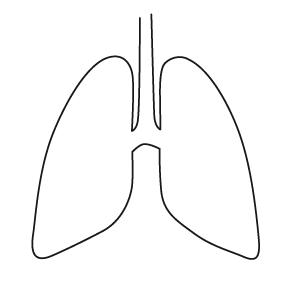The Five Points of Yoga
Proper Breathing

Yoga teaches us how to use the lungs to their maximum capacity and how to control the breath. Proper breathing should be deep, slow and rhythmical. This increases vitality and mental clarity.
Most people use only a fraction of their lung capacity for breathing. They breathe shallowly, barely expanding the ribcage. Their shoulders are hunched, they have painful tension in the upper part of the back and neck, and they suffer from lack of oxygen. They should learn the full Yogic breathing.
Three Types of Breathing
- Clavicular breathing is the most shallow and worst possible type. The shoulders and collarbone are raised while the abdomen is contracted during inhalation. Maximum effort is made, but a minimum amount of air is obtained.
- Thoracic breathing is done with the rib muscles expanding the rib cage, and is the second type of incomplete breathing.
- Deep abdominal breathing is the best, for it brings air to the lowest and largest part of the lungs. Breathing is slow and deep, and proper use is made of the diaphragm.
Actually, none of these types are complete. A full Yogic breath combines all three, beginning with a deep breath and continuing the inhalation through the intercostal and clavicular areas.
Learning Abdominal Breathing
To get the feel of proper diaphragmatic breathing, wear loose clothing and lie on the back. Place the hand on the upper abdomen, where the diaphragm is located. Breathe in and out slowly. The abdomen should expand outward as you inhale and contract as you exhale. Try to get the feeling of this motion.
Learning Full Yogic Breathing
Once you feel proficient in the practice of the abdominal breathing you will be ready to learn the Full Yogic Breathing. Breathe in slowly, expand the abdomen, then the ribcage, and finally the upper portion of the lungs. Then, breathe out in the same manner, letting the abdomen cave in as you exhale. This is the Yogic complete breath.
Pranayama
By far the most important thing about good breathing is the Prana, or subtle energy of the vital breath. Control of the Prana leads to control of the mind. Breathing exercises are called Pranayamas, which means to control the Prana.
The two main Pranayamas taught in the Sivananda Ashrams and Centres are Kapalabhati and Anuloma Viloma.


